John F Kennedy daughter Caroline and ‘eternal flame’ arrives in Dublin
The Torch arriving at Dublin airport (right picture) and Caroline Kennedy with President Higgins pictured left. The eternal flame taken from the grave will light emigrant monument for 50th anniversary of US president’s visit.
An eternal flame taken from the grave of former US president John F Kennedy arrived into Dublin airport today ahead of the 50th anniversary of his visit
It is the first time since the assassination of Kennedy in 1963 that the family has allowed a flame to be taken from the Kennedy grave at Arlington National Cemetery in Washington
JFK’s daughter Caroline Kennedy and sister Jean Kennedy Smith, as well as Taoiseach Enda Kenny, will use the torch to light an emigrant flame in New Ross on Saturday.
It will symbolise all the emigrants, including JFK’s great-grandfather Patrick Kennedy, who left Ireland to start new lives in the US, the UK, Australian, Canada and other countries across the world.
Minister of State at the Department of Defence Paul Kehoe returned this morning from Washington with a colour party from the Irish Defence Forces.
The flame was passed from the Defence Forces to the Irish Naval Service in a ceremony. The Navy will take the flame from Dublin to New Ross on board the LE Orla.
Also greeting the flame were staff and children from Scoil Mhuire National School in Campile, New Ross. “It is particularly poignant that some of their relatives were present fifty years ago in Dunganstown when President Kennedy visited the homestead,” Mr Kehoe said.
The flame was also met in Dublin airport by Minister of State for the Gaeltacht Dinny McGinley, the charge d’affaires from the US embassy John Hennessey-Niland and the Chief of Staff of the Defence Forces, Lt General Sean McCann. He thanked the US embassy for their assistance in organising events for the week to commemorate the visit of JFK.
Members of the Kennedy family, including Congressman Joe Kennedy III, were among those who took part in the ceremony at Arlington on Tuesday when a member of the defence forces took the flame.
75 year old woman Breda Hickey recalls meeting JFK in 1963

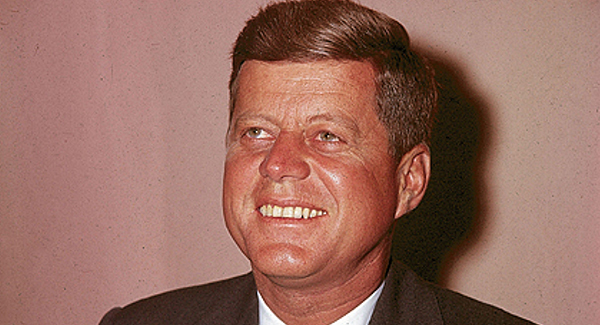
Breda Hickey, 75, stood among the ranks of diplomats in Dublin’s Phoenix Park when President Kennedy called out to her and took her by the hand.
“It was magic. He was the most extraordinary man I’ve ever seen in my life,” she said.
Ms Hickey, who grew up in Enniscorthy, Co Wexford and lives in Raheny, followed up her 1963 embassy trip by getting on board the Navy vessel LE Orla to pay her respects at the flame taken from the eternal one on JFK’s grave.
The pensioner was allowed on board by Lieutenant Commander Conor Kirwan as it berthed at Sir John Rogerson’s Quay in Dublin.
Fifty years on, Ms Hickey was just as excited to see the flame – to be used to light an Emigrant Flame at the Kennedy’s ancestral home in Wexford – but wishes she had met his daughter Caroline Kennedy.
“As a matter of fact when I shook John F’s hand I actually couldn’t say a word which was very disappointing to me really,” she said. “I would have love to have shaken Caroline’s hand this morning and say the things I wanted to say at that time.”
The flame from the grave in Arlington Memorial Cemetery in Virginia is being taken by the Navy to Wexford as part of a series of engagements to commemorate the June 1963 trip.
The LE Orla’s Sub Lieutenant Ciaran O’Shea walked Ms Hickey on deck. “I hoped to see some of the Kennedys, but I’m delighted I got to see the flame,” she said.
Ms Hickey revealed fond memories of JFK, who she described as tall, sun tanned and “absolutely gorgeous with a beautiful smile”. “It was the most magical day of my life, it really was,” she said.
National Treasury Management Agency auction raises €500 million
SHORT TERM BILLS WILL MATURE IN SEPTEMBER
The NTMA sold €500 million in short term treasury bills this morning.
The National Treasury Management Agency has sold €500 million of treasury bills, reaching the target set for the sale.
The auction, which covered bills that will mature in September, attracted bids of almost three times what was on offer. That was slightly lower than last month’s auction, which attracted bids of 3.6 times the total available bills.
Senior analyst with Danske Bank Markets Owen Callan said the slight fall was not a surprise.
“This morning’s slightly lower issue levels and bid-to-covers are not unexpected, given the rather volatile and negative reaction to the FOMC last night, as well as the more general sell-off in fixed income, credit markets and risk generally over the past month,” he said.
Today’s auction saw bills sold at an annualised yield of 0.20 per cent, compared with 0.125 per cent last month.
Two beached whales found on Laytown Co Meath coastline
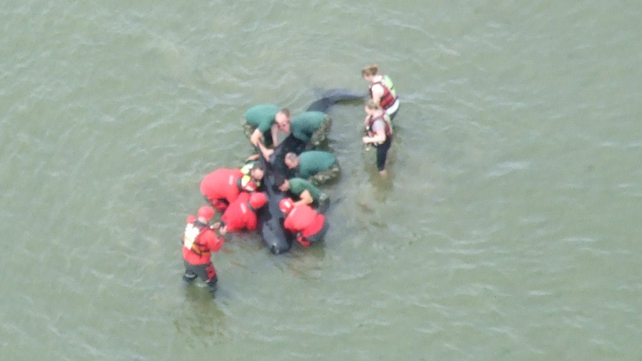
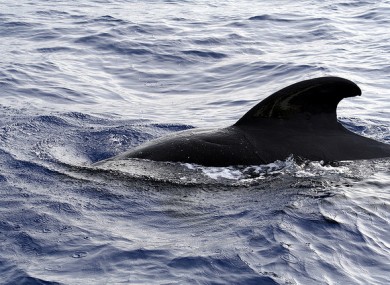
A WHALE WAS HELPED BACK TO SEA AFTER BEACHING AT LAYTOWN 20 LOCAL PEOPLE
Two pilot whales beached themselves within 8km of each other on the Co Meath coastline.
A whale was discovered on Laytown beach and was assisted back to sea by around 20 people
They included members of the Boyne Fishermen’s Rescue and Recovery Service, The Irish Whale and Dolphin Group, the Defence Forces, Skerries Coast Guard and Skerries RNLI.
A lifeboat made its way to the scene where crew members got into the sea and helped manoeuvre the whale back into deeper water.
The whale was guided back out to sea and prevented from turning back to shore.
Shortly after another whale was found dead on the beach near Mornington.
At first, rescuers believed it was the same whale, but it was later decided it was a different whale.
Map of human brain gives three-dimensional reconstruction in great detail

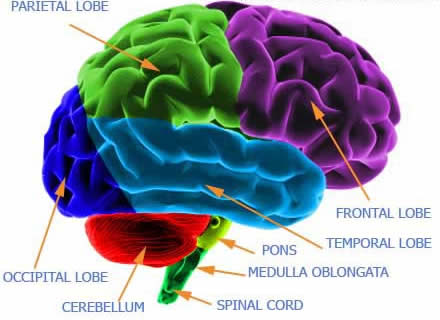
Researchers use a special tool called a microtome to cut some 7,400 wafer-thin sheet sections from a brain preserved in paraffin wax into tiny slivers 20 micrometers thick.
Researchers in Germany and Canada have produced a new map of the human brain — not the sort that shows every brain cell and its every connection or the kind that shows broad patterns of activity in brain regions, but a work of classic anatomy, done with high technology that shows a three-dimensional reconstruction of a human brain in unprecedented detail.
The new map, called BigBrain, is 50 times as detailed as previous efforts and will be available to researchers everywhere, said Katrin Amunts of the Institute of Neuroscience and Medicine in Jülich, Germany, the lead author of a report on the project in the current issue of Science.
BigBrain depicts a specific human brain, that of a 65-year-old woman. It was preserved in paraffin after her death, sliced into 7,400 sections and photographed at a microscopic level just above that of viewing individual cells. Its portrait will serve, the researchers said, as an anatomical framework that other researchers can use as a reference, whether they are investigating large patterns of brain function or small details.
This kind of anatomical map is not what neuroscientists are pursuing in the new brain initiative from the Obama administration, nor does it show the expression of genes or connectivity that other projects are pursuing. But David Van Essen, a neuroscientist at Washington University in St. Louis and a principal investigator in the Human Connectome Project, which uses M.R.I. images of active human brains, described the work as a “technological tour de force,” adding that the three-dimensional reconstruction could help distinguish the many small areas of the brain with greater accuracy.
US boy hears for first time after ground-breaking hearing implant


A 3-year-old boy shows his delight as his face lights up after hearing the world for the first time, thanks to an auditory brain stem implant.
“He likes sound,” young Grayson’s mom Nicole Clamp, said he enjoys the stimulus, the input. He’s curious, and he definitely enjoys it.”
Grayson Clamp was born without his cochlear nerves, or the auditory nerve that carries the sound signal from the cochlea in the inner ear to the brain. His parents tried giving him a cochlear implant, but it did not work.
They then enrolled Grayson in a research trial at University of North Carolina Hospitals in Chapel Hill, N.C. Three weeks ago, he became the first child in the U.S. to receive an auditory brain stem implant.
The procedure involves placing a microchip on the brain stem to bypass the cochlear nerves altogether. The person perceives and processes sound, which travel through tubes in his ear.
Dr. Craig Buchman, Grayson’s head and neck surgeon at UNC, explained to CBSNews.com that the devices were made several years ago for adults who have tumors in their cochlear nerves, but it has never been approved for use in children in the United States.. While the implants were able to give back some hearing to the adults that received them, they were not as effective as cochlear implants.
However, Buchman’s team’s theory was that if the auditory brain stem implant was put in a young child, they may be better at processing the sounds.
“One of the reasons we really were interested in this study, children have enormous potential because of their brain plasticity,” he said. “They have enormous potential to interpret sounds…. I don’t know what he hears and how he’s going to use it, but only time will tell.”
Grayson was the first chosen because he had high cognitive abilities and used cued speech, a visual system based on phonetics used to communicate. That way, doctors could see if he was hearing anything and responding to sound stimuli.
When he heard his father calling him for the first time, his face lit up with shock. Buchman said he was pleased with Grayson’s responses.
The child still has to go in for frequent checkups to fine tune the device in order to give him the best hearing possible.
“We don’t know exactly what it’s like for him,” Nicole explained. “We don’t know exactly what he hears. His brain is still trying organize itself to use sound.”
In total, Buchman’s team has evaluated 10 children who all have similar problems with missing nerves. Right now, they’re limiting the study to younger children who don’t have that many additional health or cognitive issues to see what the potential of the device is. If they are successful, they are hoping that older children who haven’t learned how to speak because of their hearing problems may be given a chance to finally hear and talk.
As for Grayson, he’s already benefiting from his new hearing abilities, ”It’s been phenomenal for us,” his father Len Clamp said.


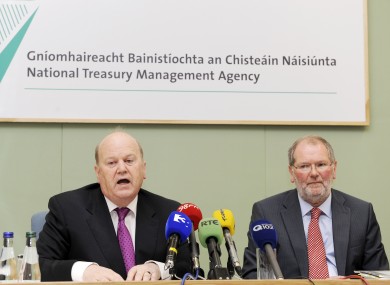

No comments:
Post a Comment